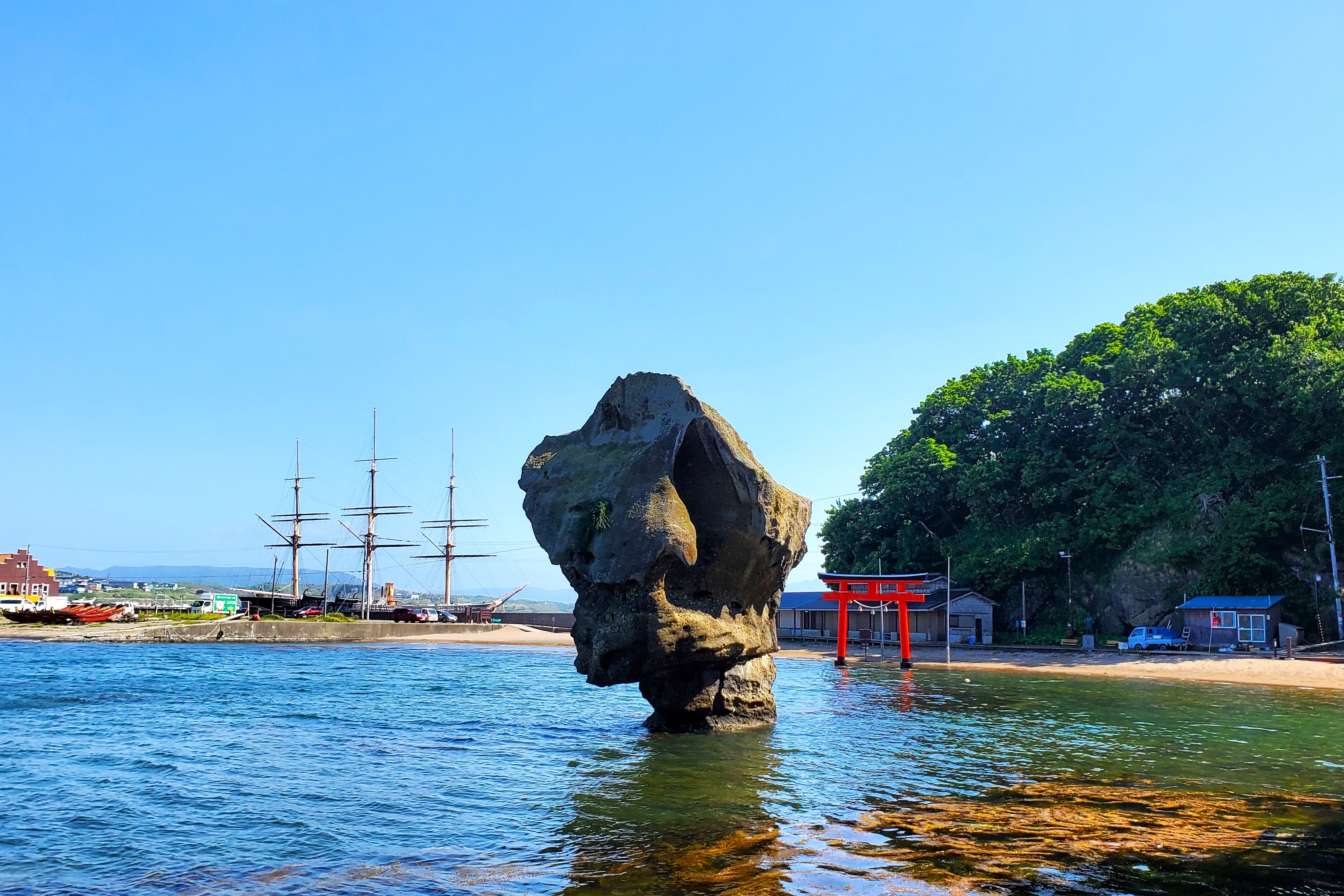The "Herring Legend" of Esashi
The "Herring Legend" of Esashi
A long 500 years in the past, when Esashi was still but a remote countryside district, an old woman arrived from elsewhere and built a thatched hut in what is currently Tsubanacho. Marvelously, her prophesies about everything that stood between heaven and earth, and the four seasons came true, and she warned the people about any adversity she foresaw, and the people began to call her "Orii-sama" and respected her as if she was a deity.
One certain year, not a single fish could be caught along the beach of Esashi, and the old woman prayed unrelentingly. In the beginning of February, around Ushimitsudoki (roughly 2:00 - 2:30am) at night, there was a sudden silver light from the direction of Kamomejima Island that pierced the old woman's thatched hut, and feeling mystified, she went to investigate whereupon a single old man was sitting atop a rock burning some grass. As she fearfully walked closer to ask what he was doing, the old man pulled out a small bottle and explained, "There is white water in this bottle. Throw this into the sea and many small fish called 'Nishin (herring)' will come. Every year, you can catch these for a living." and then vanished. When the old woman did as she was told, the seawater changed, and a school of fish that she had never before seen came forth. The old woman, thinking that this is must be the herring she had been informed of, went and told the villagers. However, the villagers, were clueless as to how such large numbers of fish should be caught.
So the old woman prayed, the old man appeared again, and displayed the inside of a Mino (raincoat made of straw). The insdie of the Mino was a net woven with string. The old man showed how to capture the herring using the nets. He added, "The nets must but as long as you are tall, and the number of weaves equal to your age." and vanished. The old woman taught the villagers how to craft the nets. The delighted villagers promptly began fishing and the beach of Esashi was soon overflowing with herring. The old woman remarked that the residents should have no more troubles making a living and, one day, she suddenly left. The people were shocked and searched everywhere, but were unable to find in which direction the old woman had left, and upon visiting the hut where she had lived, there was a single idol there that they began calling the Orii-sama and worshiped as a god who watched over the fishing industry.
After this, a long time passed and a Fujiwara Nagatake arrived at the shrine's priesthood and told the people that the Uba-no-kami (the deified old woman) is an image of Amaterasu-ookami, Kasuga-daimyojin, and Sumiyoshi-daijingu, so in 1644, the idol was moved from Tsubanacho its current location. This became the origin for the Ubagamidaijingu Shrine. As an aside, the net that the old woman showed to the villagers is said have been about 1.59m in height and woven to have 63 points of intersection. Although the old woman told the villagers to strictly adhere to this, greed made people forget, and they began to fish with larger nets. It is said this was around the Meiji period. Even now, some people believe that the herring catches began to decline around this time because of the disobedience of the old woman's teachings.
Orii-sama who taught the people of Esashi how to fish for herring. The idol that Orii-sama prayed to which became the origin of the Ubagamidaijingu Shrine. Even now, they gather deep faith from the people of Esashi. At the former site of the shrine in Ubagamicho, is "Orii-sama's Ido (well)" that remains there as a relic. In addition, although "Orii-sama's Tearaiishi (washing stone)" where she is said to have cleansed herself and thrown the bottle containing the white water was buried as part of the Nakautacho landfill, it is said that the small bottle thrown into the sea turned to stone and reappeared above the seawater as Kamomejima Island's "Heishi Rock." Besides Ubagamidaijingu Shrine, there is Oriisha where Orii-sama is deified. It was moved to its present location in 1857, from the former entrance to Esashi Port, and the main portion of the current shrine was rebuilt 110 years ago. Ubagamidaijingu Shrine was also originally built in Tsubanacho and moved to its present location in 1644. It served as a central shrine, not only for the Matsumaechi, but also for the Ezochi (region of Hokkaido) as it garnered reverence from generations of feudal lords, and his subjects, and became a place where lords travelling the country would always stop at to pray for prosperity for the clan, plentiful catches of fish, and a bountiful harvest.
【Inquiries】
Sightseeing Section
Oiwake Sightseeing Department
Esashi Town Office
Address: 193-1, Aza Nakautacho, Esashi, Hiyama, Hokkaido
Postal code: 043-8560
TEL: +81-139-52-6716
FAX: +81-139-52-5666

